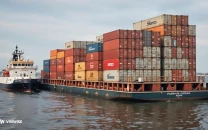Benefits of hub and spoke
United Parcel Service is the largest package delivery company and a leader in global supply chain services.

Under the hub and spoke design, all deliveries go through a centralised distribution hub, usually located strategically. The resulting route map looks like spokes with a hub at the centre.
Why does it work?
Common sense suggests that parcels from a source city should be sent directly to the destination instead of routing them to a hub first, especially if the source and destination are close to each other. Although in such a case the hub and spoke model is seemingly inefficient, its benefits more than compensate for the downside.
If five cities need to be connected to each other, there are 10 possible routes going from each city to every other city. Similarly, for 20 cities this amounts to 190 different routes and for a 100 cities this amounts to 4,950 routes.
Tracking a lost package in such a complex network would be a logistical nightmare. Furthermore, since all cities need to coordinate with each other, this would require each city’s distribution centre to be well-staffed and capable of handling the logistical complexity.
As it turns out, this causes more problems than it solves. This is why the hub and spoke model was designed in the first place.
Spokes
The network operates far more efficiently if each city has to deal with just the hub, which in turn does the heavy lifting. The cities themselves are responsible only for tagging, packaging and sending deliveries off to a single destination: the hub.
If a particular city has a low volume of deliveries, it may send out the packages just once a week. Meanwhile, major cities may have air freight coming in more than twice a day. This means that the hub ideally needs to be in a major city. This also means that smaller cities can get deliveries out to all other cities as long as they can have a route to the hub.
Hub
The hub is, quite literally, the centre of attention. If the hub is too off-centre (geographically), the time and cost of distribution are adversely affected. If the hub is too far from an airport, harbour or rail service, it can weigh down on operational costs.
The location of the hub is quintessential and goods need to be able to get in and out without any bottlenecks. Other factors include warehousing costs, state taxes, availability of alternative routes, and so on. It may be apt to have multiple hubs but this leads to co-centric design which in turn complicates functionality.
If deliveries are late, or constantly lost in transit, and distribution logistics are getting out of hand, it would probably be a good time to consider the hub and spoke model.
The writer is heading Online Strategy and Development at Express Media
Published in The Express Tribune, October 4th, 2010.



















COMMENTS
Comments are moderated and generally will be posted if they are on-topic and not abusive.
For more information, please see our Comments FAQ